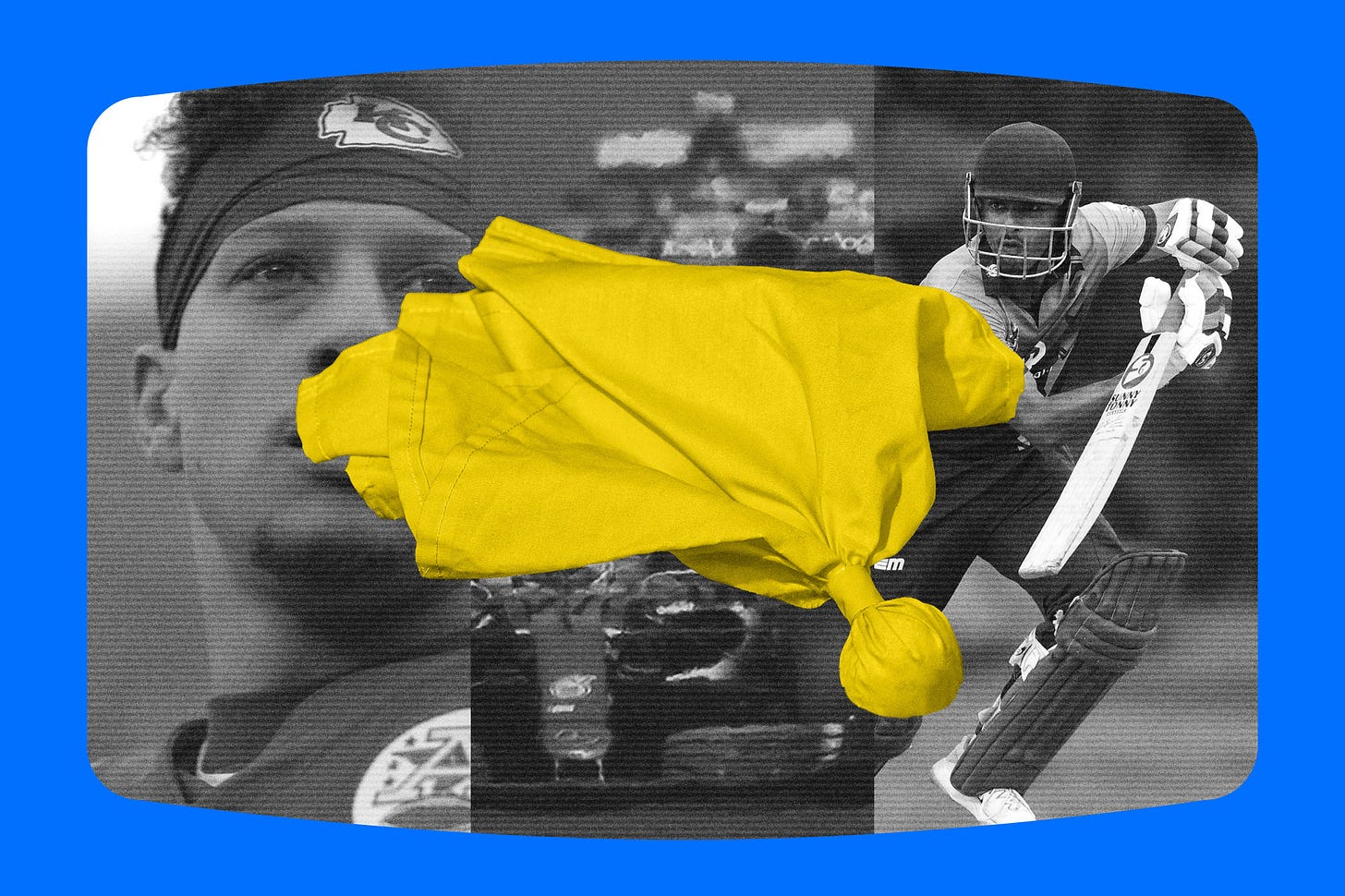‘It’s Brutal’: Shut Out by Leagues, Indie Sports Doc Creators Get Creative
As teams and players go in-house, small producers reveal their jukes: innovative finance models and workarounds for dwindling access

I cover int’l TV from London. I wrote about why Amazon has fumbled its U.K. business, the British company behind Netflix’s Adolescence and Ireland’s “conveyor belt” of unscripted production. I’m at manori@theankler.com. As a paid subscriber to Series Business, you’ll receive reports from Manori, Elaine Low and Lesley Goldberg for a global perspective on the TV business. This is a standalone subscription separate from The Ankler. For access to Series Business and everything The Ankler publishes, including Sean McNulty’s The Wakeup and Richard Rushfield, subscribe here.
The season 7 finale of Netflix’s Formula 1 documentary series Drive to Survive, which dropped in March, opens with Red Bull team principal Christian Horner FaceTiming his wife, former Spice Girl Geri Halliwell, from a limo. “Just to warn you,” he says, turning his phone to the camera to show Halliwell there’s a crew present. “Hi, Netflix!” she responds brightly with a thumbs-up as Horner chuckles at the camera operator.
On Wednesday, the beleaguered Horner — under a cloud despite being cleared of sexual harassment and coercive control claims from a female staffer in 2024 — was unceremoniously fired after 20 years overseeing the F1 team, a scenario foreshadowed by the long-running series, which has helped to popularize racing in the U.S. and around the world and drawn new fans to the sport.
On social media, most commentary about Horner’s ouster eagerly references forthcoming season eight, which is filming the current F1 circuit and will almost certainly reveal the behind-the-scenes drama leading up to his exit.
It’s the type of fly-on-the-wall perspective sports fans once dreamed of and now take for granted amid a glut of docuseries busting into locker rooms and control centers of the world’s most popular sports.
Most producers cite a “before” and “after” period around the F1 series, as well as Netflix’s The Last Dance, such is the tidal wave of copycat projects for other sports (and athlete-led production companies to match) triggered in 2020. The result? A bloated market for sports non-fiction with shaky levels of quality, myriad titles disappearing down the algorithm’s black hole and a polarized landscape for the companies that make these programs. Streamers are still hot on these projects, but their slots are limited.
Data from Ampere Analysis shared with me reveals that series orders for sports-adjacent content in the U.S. dipped from 104 in the first half of 2024 to just 64 in the second half (almost par with the 60 series orders made in 2022). Overseas, the demand has been more consistent, with 262 series orders in the first half of last year dropping to just 238 in the second half. While any kind of slump can also be seen in context of the wider industry downturn, it’s telling that the U.S. figures have dropped off so starkly.
Leagues, federations and stakeholders are closing ranks as they strive to generate more programming themselves via in-house studios. In recent months, England’s Premier League to the Kansas City Chiefs have announced the move to take their own storytelling in-house.
Now, indie producers who’ve ridden sports entertainment’s hot winning streak are being forced to be more enterprising.
When I catch up with one such producer, Simon Lazenby, also Sky Sports’ lead F1 presenter (since 2012), he’s on his way to Silverstone, home of the British Grand Prix. Lazenby set up production company Sylver Entertainment with former Noah Media Group executive Victoria Barrell in 2020 to make documentaries about the “humans behind the heroes.”
But their venture has required serious drive to survive. Despite Lazenby’s front-row seat for F1’s booming popularity (Apple is reportedly in talks to buy F1 broadcast rights for the U.S. following the success of its Brad Pitt-led movie) and relationships with celeb racers, his fledgling production company needs to take a different tack because of the company’s lean size and independence. Sylver’s feature docs have focused on sporting legends such as British F1 driver Damon Hill and tennis great John McEnroe — all for less than £1 million ($1.4 million) per project.
“You have to be extremely patient, work extremely hard to secure IP and be prepared to take hit after hit after hit and get back up and keep going, because it is brutal,” Lazenby says candidly, speaking to me from a golf buggy while he’s being driven to his broadcasting perch. “At the moment, it’s not an easy part of the industry to be involved in. The halcyon days of sports docs around four or five years ago are over.”
Like so much of unscripted television, sports docs now fall largely into two camps: Smaller projects about “sub-icons” (more obscure sporting figures who may not be known outside a certain country) and multi-million-dollar series and films on the household names of sports, such as David Beckham (Netflix’s Beckham) or Patrick Mahomes (Netflix’s Quarterback).
Still, some small- and mid-sized producers are managing to get projects off the ground by working different angles of storytelling, mixing genres, leveraging tax credits and co-production models and getting clever with archive (often a sports project’s Achilles heel).
Today I’ll break down:
The rise of in-house league studios controlling the narrative
A case study of a Prime Video sports doc where producers could turn a profit
The growth opportunity in women’s sports
How docs about lesser-known athletes are still getting made — and sold
The rights minefield: How one producer navigated negotiations before filming a frame
Why archival footage is make-or-break, and how to guard against “spiraling” costs
The jaw-dropping price of one minute of English Football League footage
What happens now that “we’re running low” on icons
New frontier: where sports storytelling meets crime, scandal and genre mashups
How international co-productions are fueling the most ambitious stories





